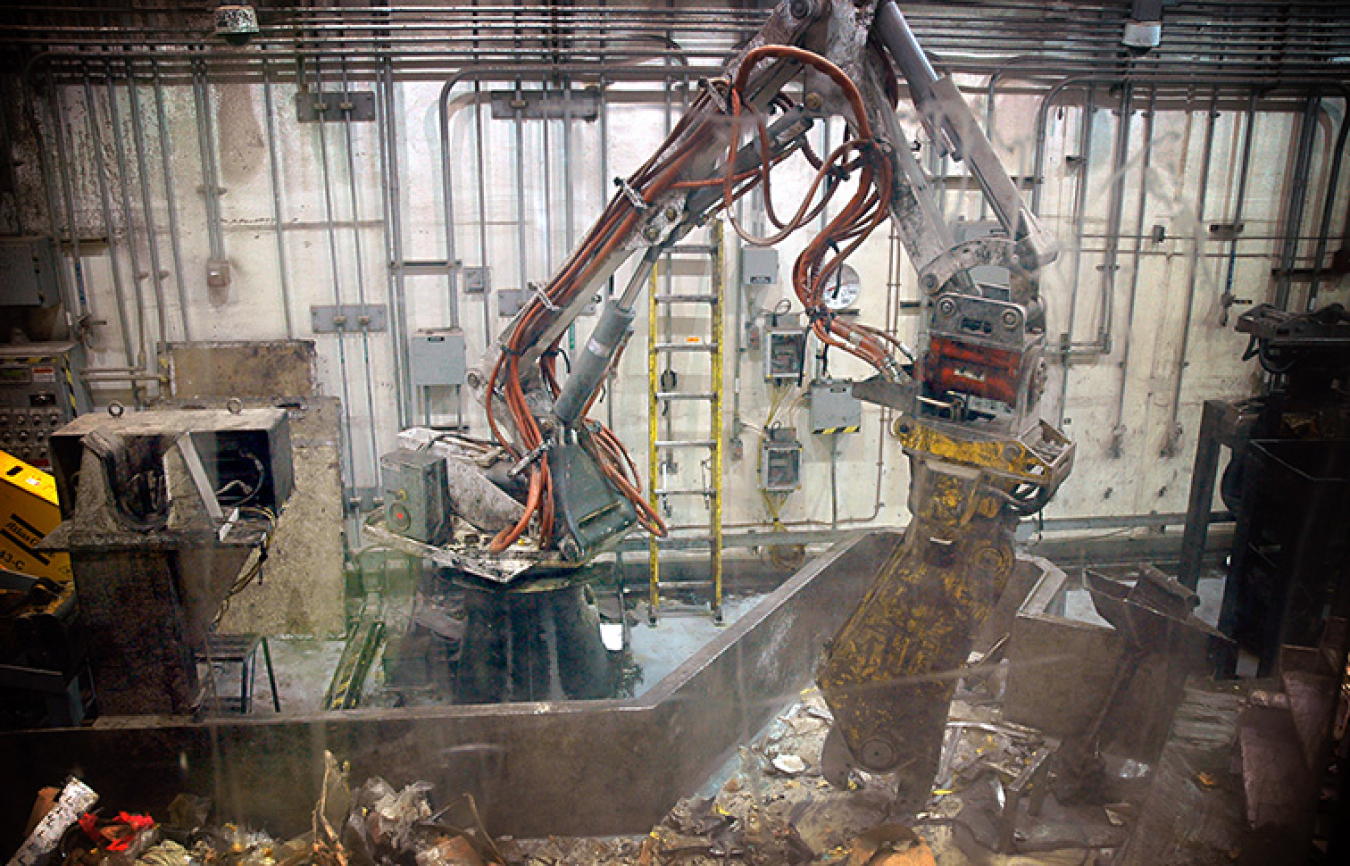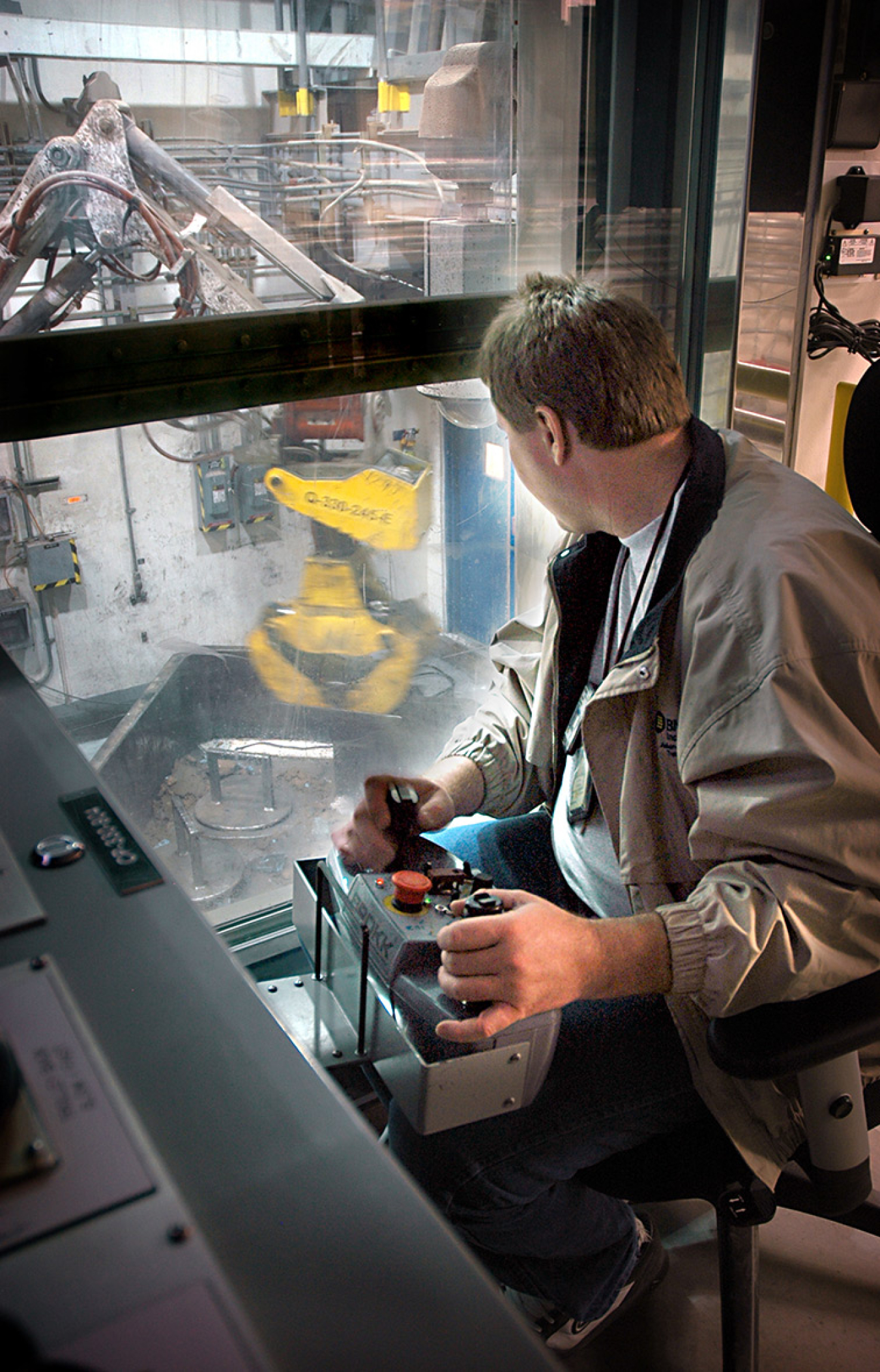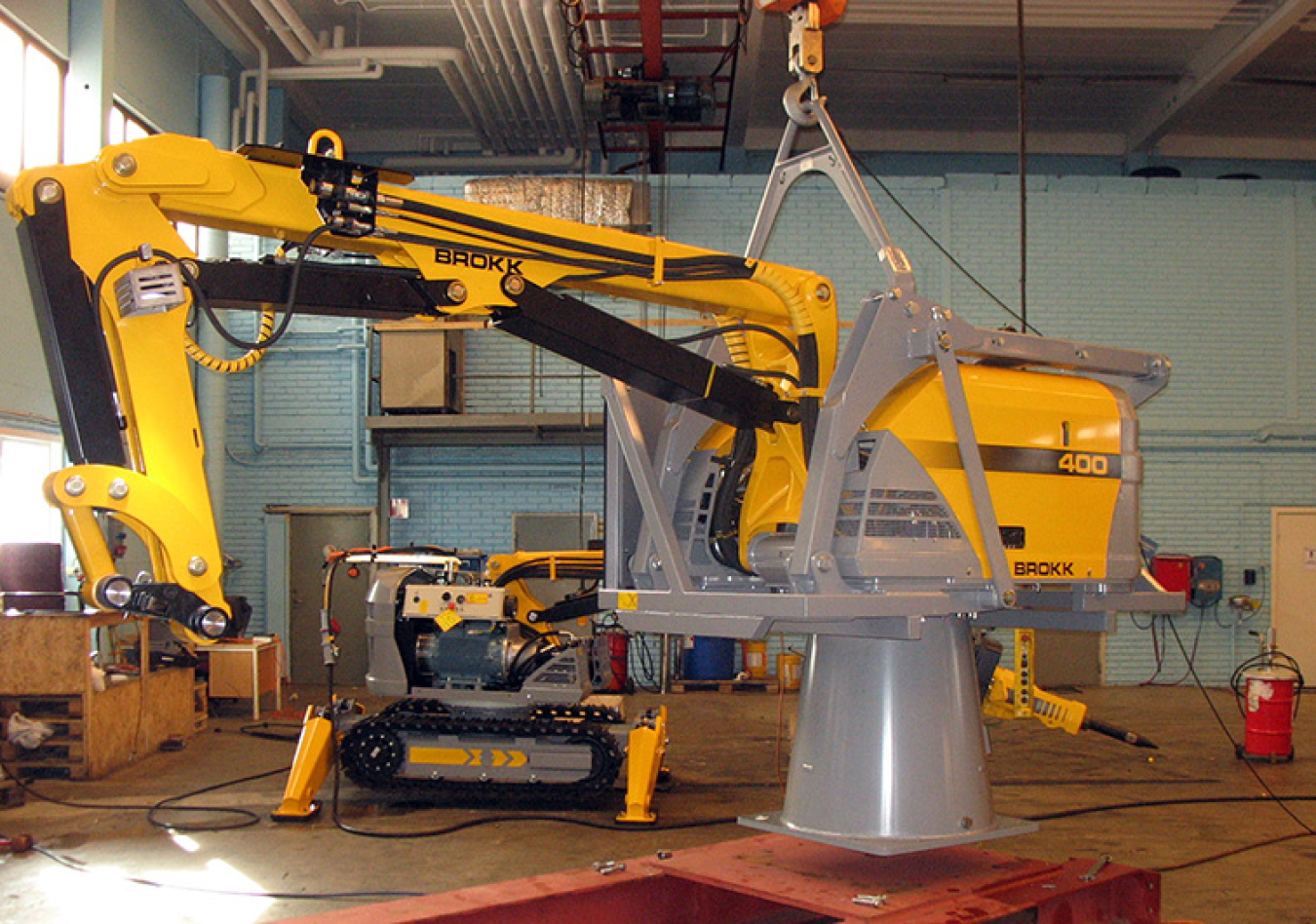IDAHO FALLS, Idaho – EM is working to obtain new robotic arms to help in the treatment of legacy waste at an Idaho Site facility.
January 27, 2016
A robotic arm sorts contaminated materials in an AMWTP boxline.

An AMWTP operator manipulates a robotic arm while sorting waste in an AMWTP boxline.

Shown here is a new robotic arm EM is seeking to acquire for AMWTP.
IDAHO FALLS, Idaho – EM is working to obtain new robotic arms to help in the treatment of legacy waste at an Idaho Site facility.
Much of the 56,000 cubic meters of legacy waste treated at the Advanced Mixed Waste Treatment Project (AMWTP) over the past 12 years was examined, sorted, and treated using robotic arms. They have torn open more than 20,000 drums and boxes containing waste that came to the Idaho Site from the former Rocky Flats Plant near Denver, a weapons facility EM closed in 2006 after completing a complex environmental cleanup project there.
The arms are located in the facility’s boxlines, huge concrete and metal hot cells where the containers of radioactive waste are opened and sorted without exposing workers to the hazardous materials inside.
EM plans to replace other key AMWTP equipment, including portions of the conveyor system that moves drums, the robotic computer control system for the cranes and lidding machines, and new components for the ventilation system if funding permits.
It’s important for DOE to maintain the viability of the project, according to EM Assistant Secretary Monica Regalbuto.
“This is a special facility within our complex. Seeing it again, and this safe, compliant, and experienced workforce, makes it clear to me why AMWTP is so important to the Department’s transuranic waste processing program,” Regalbuto told AMWTP employees.
EM is working to better leverage technology development to reduce time and life-cycle costs associated with its cleanup across the DOE complex.
EM focuses on the use of robotics in some of the cleanup’s most hazardous, challenging environments. The program believes there is an important role for robotics in monitoring, and detecting abnormal conditions, and conducting cleanup, reducing the potential for human exposure to hazardous operations.
Late last year, EM assembled U.S. and international robotics experts who toured the Savannah River Site to discuss how EM’s cleanup can make use of robotics technology. Also in 2015, EM signed a memorandum of understanding with the National Science Foundation in support of the National Robotics Initiative, launched by President Obama to promote development of remote equipment that can work with or beside people to increase productivity and spur advances in science and manufacturing.

